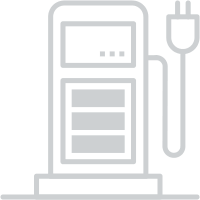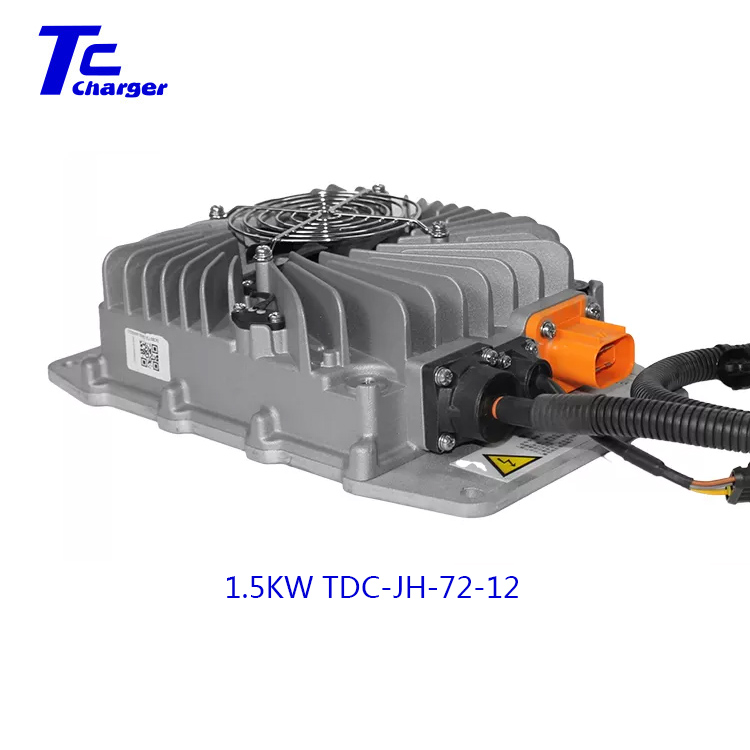How to charge an electric car?
Nov 08,2022 | TCcharger
In a nutshell: What’s special about a hybrid car?
There are a number of different ways to charge your electric car’s battery pack. Being faced with normal and fast charging methods, and different connector types, can be a little daunting at first. But in fact it is much more straightforward than it first appears! In this short guide we’ll let you in on all the key information you need to know.
Essentially, it comes down to two main considerations: WHERE you decide to charge and HOW FAST you decide to charge. These are interconnected, and the charging speed will depend on which particular EV you own, its battery capacity and what sort of charging system you are using.
Another key thing to know from the outset: There are three categories or types of charging: Trickle Charge, AC Charge and DC Charge.
-
TRICKLE CHARGE
The slowest method of charging your EV at home, using a standard (three-prong) 220V plug. It is only recommended in urgent cases, with caution and consultation with electricity providers. -
AC CHARGE
Having a wallbox installed lets you charge 3-4 faster using AC Household Charging. AC Public Charging is also available. -
DC CHARGE
The fastest way to charge your EV – at a public DC Fast charging station with power from 50kW and above. With this method you can top up your battery from 20 to 80% in approx. 40 minutes. There are also some ultra-fast charging stations that already provide more than 150kW.
Terminology – Good to know!
There are several different terms used for charging stations but they all usually refer to the same thing: charging station, charging outlet, charging plug, charging port, charger, and EVSE (Electric Vehicle Supply Equipment).
First up: Home vs. public charging
Option 1:
Home charging
Around 80% of all EV charging is currently done at home. Usually overnight while owners sleep – waking to a fully charged battery the next morning that almost always provides more than enough EV range for most people’s daily travel needs.
There are TWO TYPES of home charging available: Using Trickle Charge with your household current or AC Household Charge with an installed wallbox. Here are the key differences:

TRICKLE CHARGE
- Provides charging through a standard (three-prong) 220V plug that comes with your EV. The other end is simply plugged directly into your EV
- Doesn’t require installation of additional charging equipment
- Can deliver 13 to 16 km of range per hour of charging
- Charging speed: approx. 65 km of range in 5 hours (overnight), or 200 km in 14 hours
- Using Trickle Charge is only recommended in urgent cases when you have low battery charge and cannot drive to a public station or access an AC wallbox at home. This is because the use of household electricity may cause problems associated with electricity bills and electrical loads, so always use this charge solution with caution and discuss with your electricity provider before first use. Purchasing an ICCB (In Cable Control Box) cable when using Trickle Charge is recommended, for maximum reliability and peace of mind.

AC HOUSEHOLD CHARGING WITH WALLBOX
- The most common and recommendable home charging option
- Provides charging through a 230V outlet which allows charging 3 to 4 times faster than Trickle Charge – depending on the acceptance rate of your specific model and the charger
- Especially useful if you have time to top up your electric vehicle overnight: it takes around 6 hours to fully charge a 40 kWh battery car
- Requires the installation of a dedicated EV charging wallbox, which should be fitted by a trained electrician
- Ideal if you have a garage or driveway in which it can be positioned
- There may also be financial incentives in your local region or country to minimise purchase and installation costs
Increasingly convenient thanks to the ever-growing network, these stations can often be located throughout urban centres in particular and allow you to top up your battery on the go if you need to travel longer distances.
Public charging offers AC Charging with a wallbox or – in the majority of cases – DC Fast Charging.
And both options are quicker than charging at home: AC Public Charging can be 3 to 10 times faster than AC Household Charging, depending on the charging station output and your EV’s capacity to handle AC Chargers. All DC Charging stations are considered fast, as the following figures show:

DC FAST CHARGERS
- Currently the quickest way to charge an electric vehicle
- Provides charging power above 50kW through a voltage above 450V and current up to 125A
- Is capable of charging from 20 to 80% of charge in approx. 40 minutes
- Utilises Combo DC (CCS for Combined Charging System)
- Use of DC Charge should be kept to a minimum in order to help prolong high-voltage battery life
AC versus DC charging explained
The national grid delivers AC (Alternating Current), but electric cars need DC (Direct Current) to charge their battery pack.
- An AC charger supplies the EV’s onboard charger, which then converts the AC power to DC allowing the battery to charge. The size of the onboard charging device is constrained by space. Due to this limited space, the amount of power they can deliver to the battery is relatively low. Which means that charging is typically slower.
- A DC fast charger bypasses the onboard charging device, supplying power directly to the EV’s battery. The DC charger is external to the car, so it isn’t constrained in size or cost. Meaning that charging is typically much faster.
AC versus DC charging
So which connector for which charging type?
You might be asking yourself if you need an adapter for different charging methods and types. At the moment, there isn’t a universal connector for all EVs and all chargers. But the different connector types do correspond with the different levels of charging, making things easier for EV drivers.
Here’s an overview of the main connector types:
| Type 1 | Type 2 | CHAdeMo | Type 2 CCS | |
|---|---|---|---|---|
|
|
|
|
|
|
| CHARGING TYPE | AC Charging | AC Charging | DC Fast Charging | DC Fast Charging |
| NO. OF PINS | 5 | 7 | 4 | 9 |
| CAPACITY | Up to 11 kW | Up to 43 kW | 50 kW - 100 kW | Up to 170 kW |
| VOLTAGE | 230 V | 230 V / 400 V | 500 V | 450 V |
| CURRENT RATING | Up to 32 A | Up to 63 A | 125 A | 125 A |
| COMPATIBILITY WITH KIA EV'S | Yes | Yes | No | Yes |
AC CHARGING CONNECTORS
Type 1 and Type 2 connectors are the most commonly used AC sockets – typically for AC Household Charging.
DC CHARGING CONNECTORS
For fast charging, the CHAdeMO and SAE Combo (also known as Type 2 CCS, which stands for “Combined Charging System”) are the most commonly used connectors. These two connectors are not interchangeable however (a CHAdeMO port cannot charge using an SAE Combo plug, and vice versa). So before driving to a charging station you’ll need to know if your car is compatible with the connectors available. Some may just have a CHAdeMO connector, some just an SAE Combo Type 2 CCS connector, and some both.






